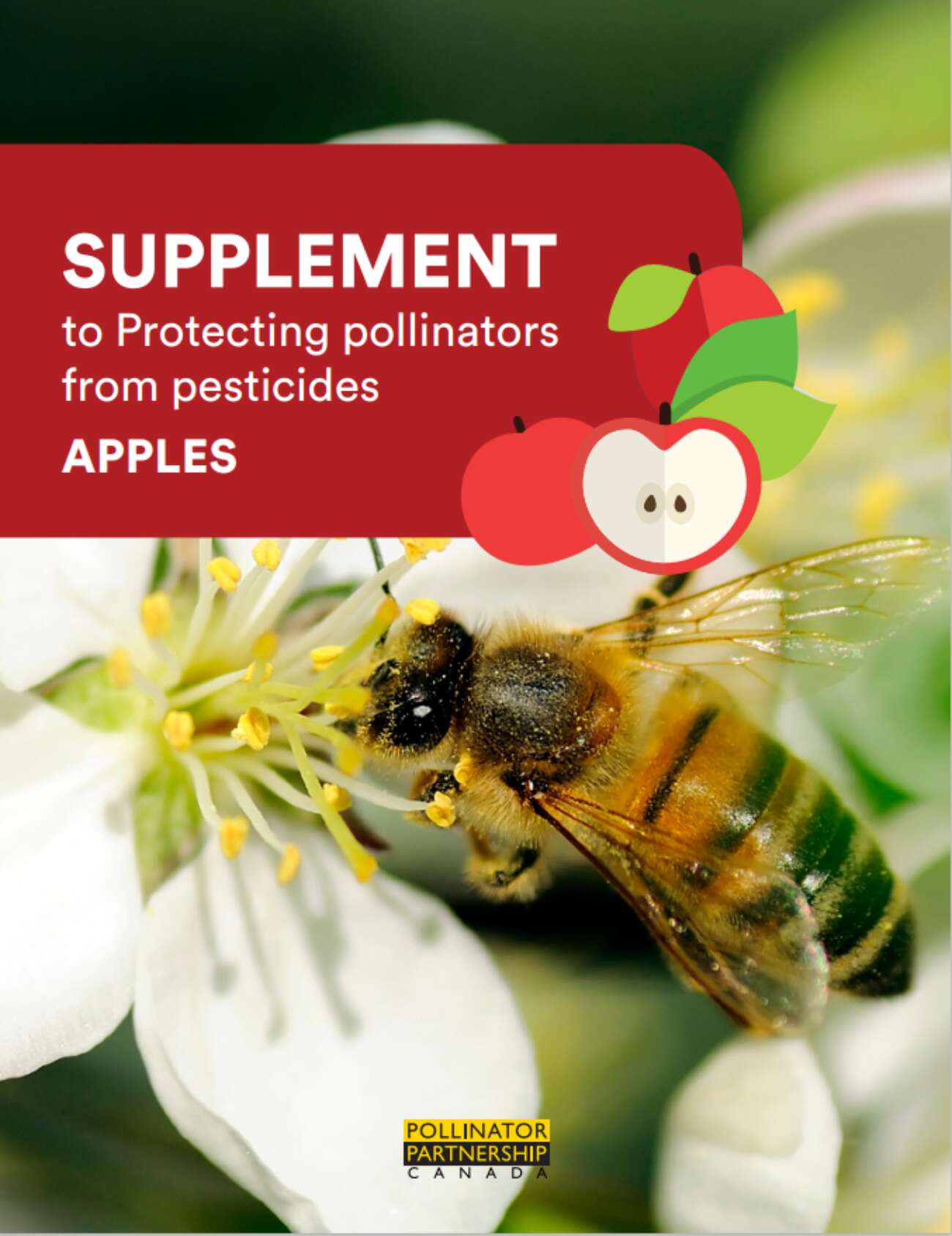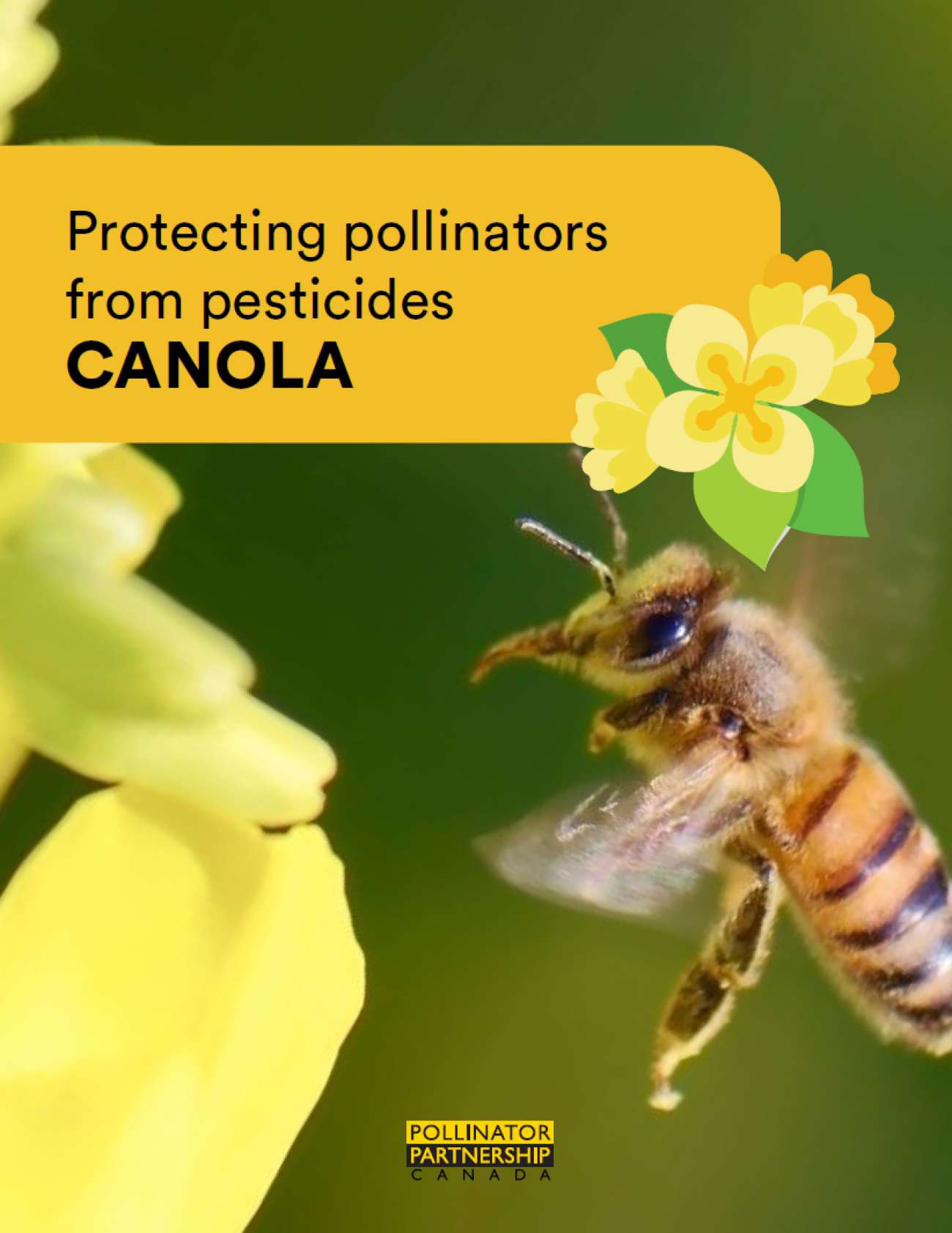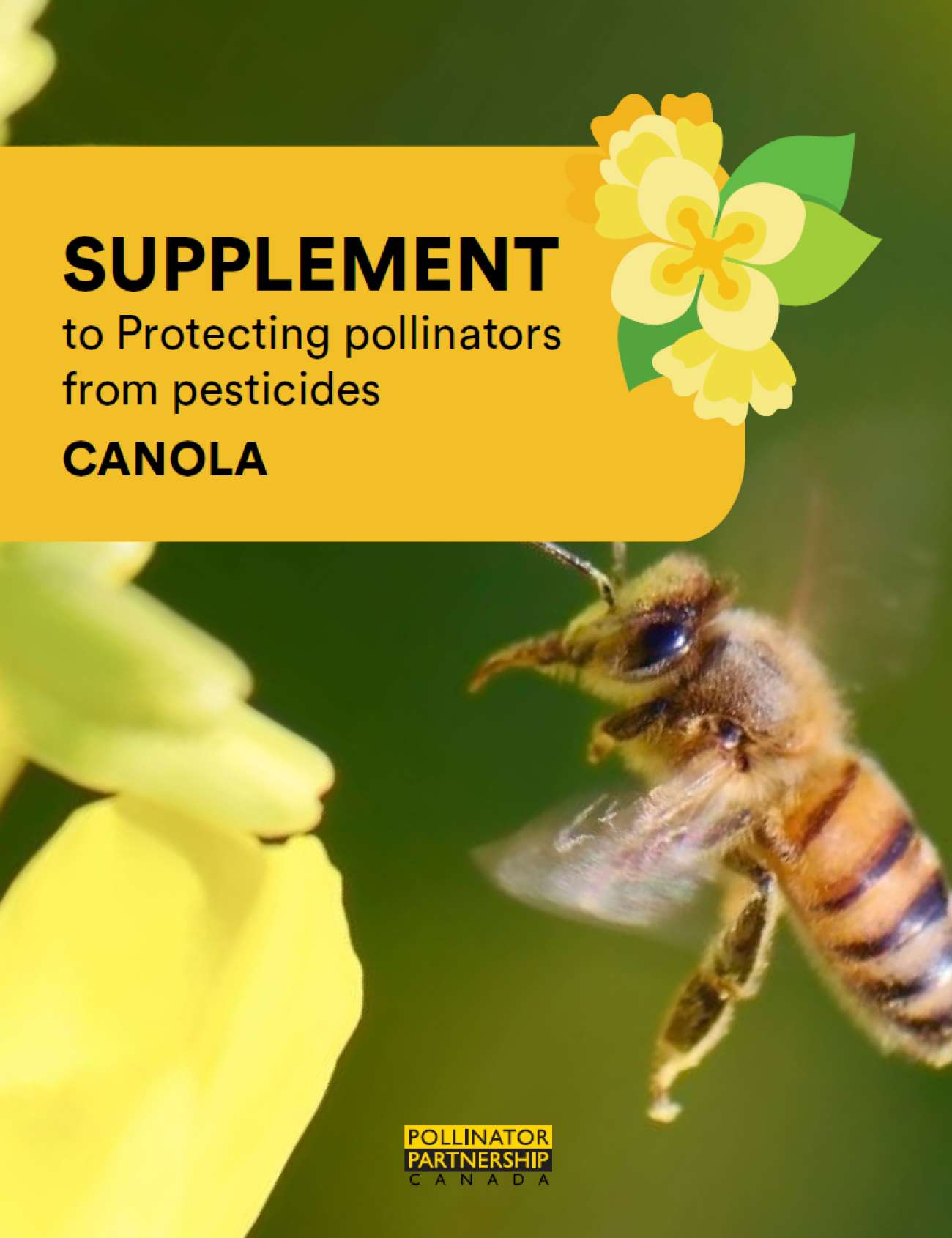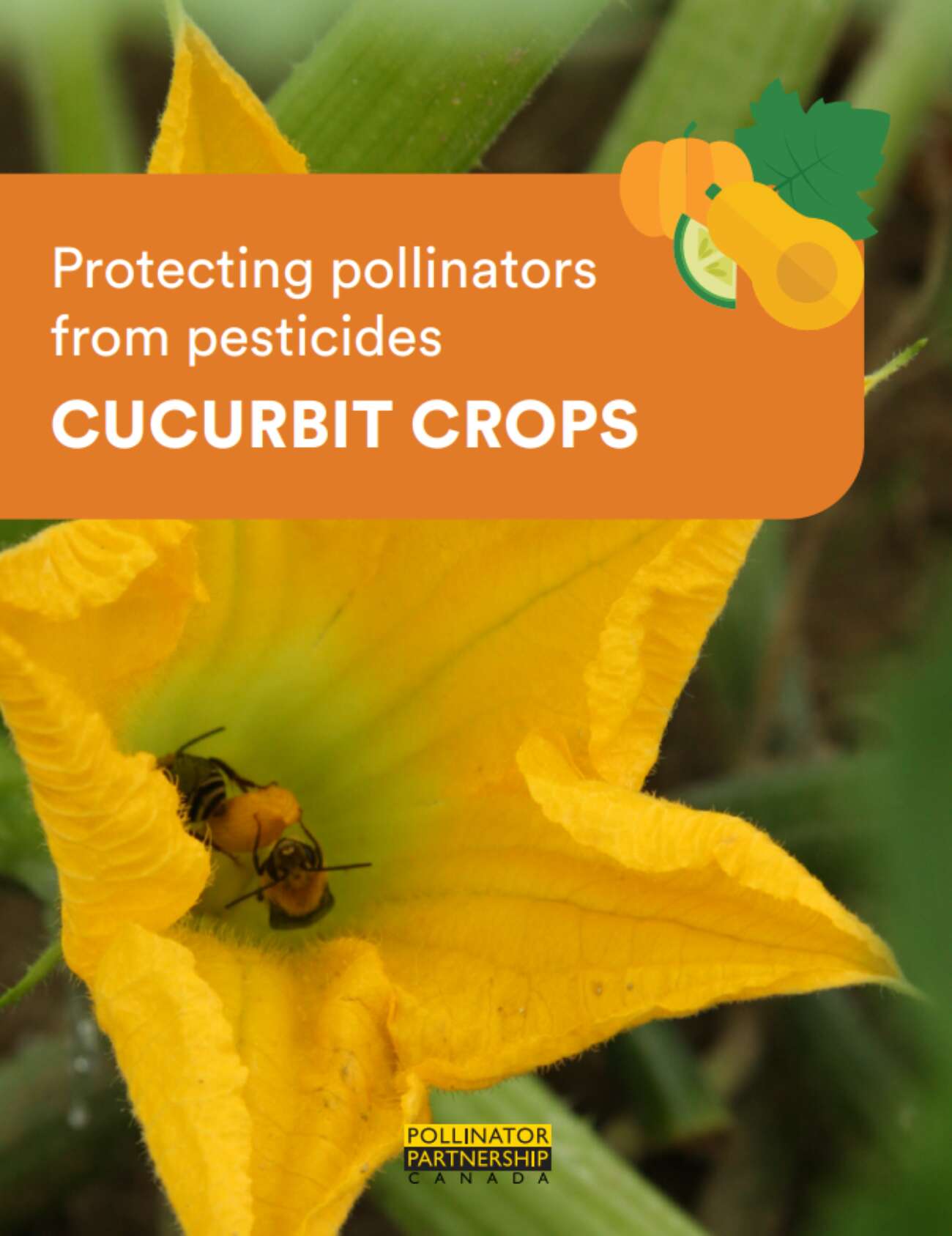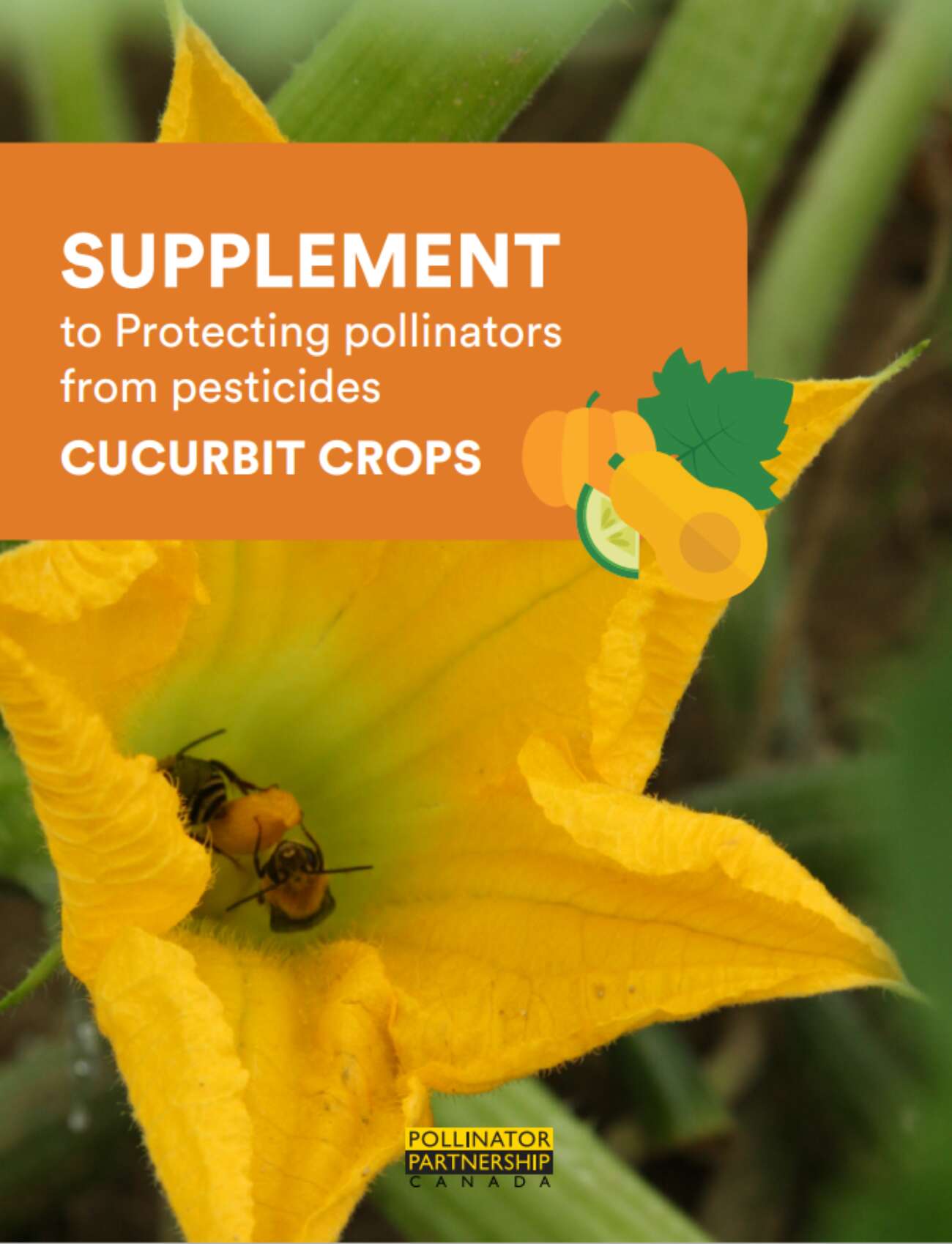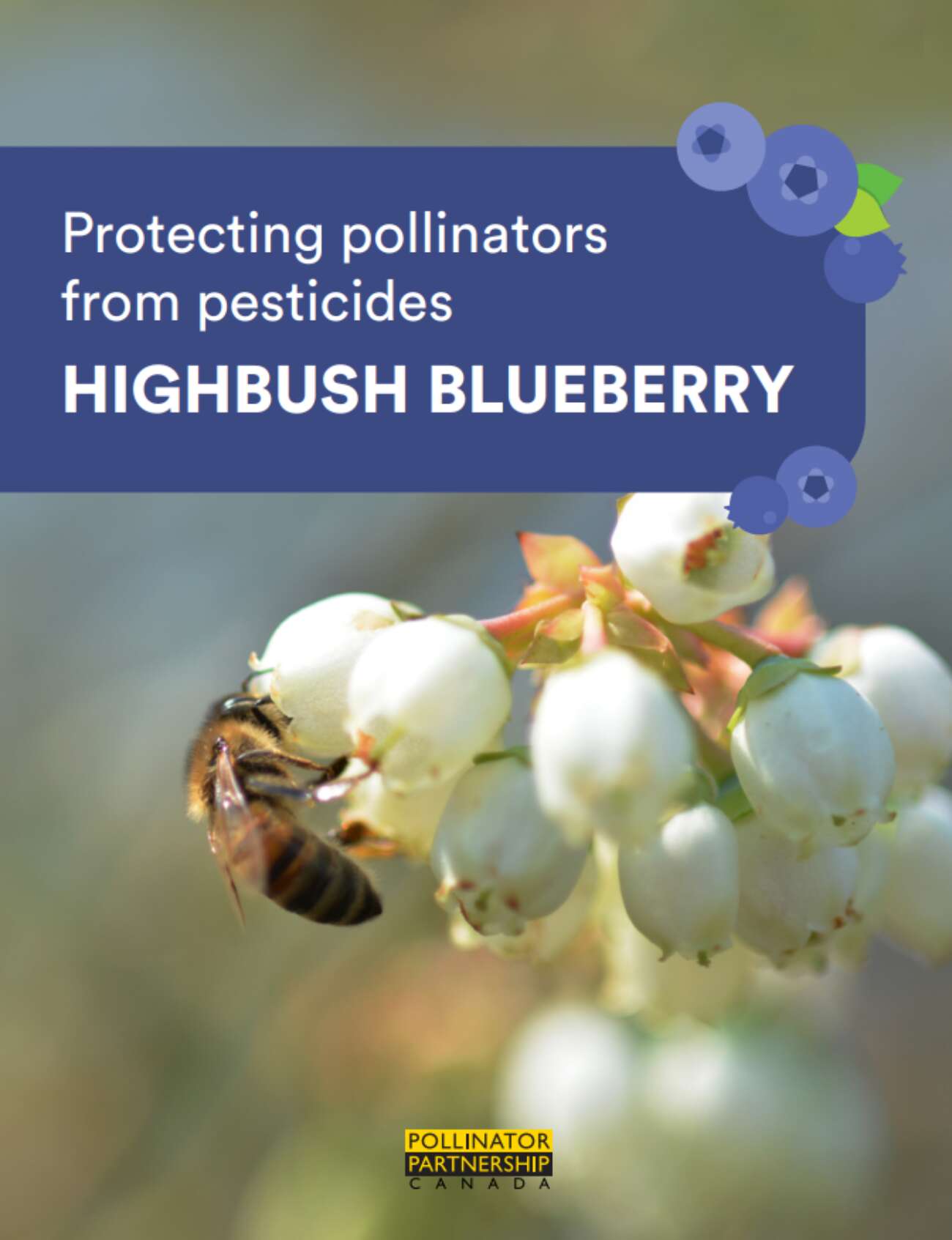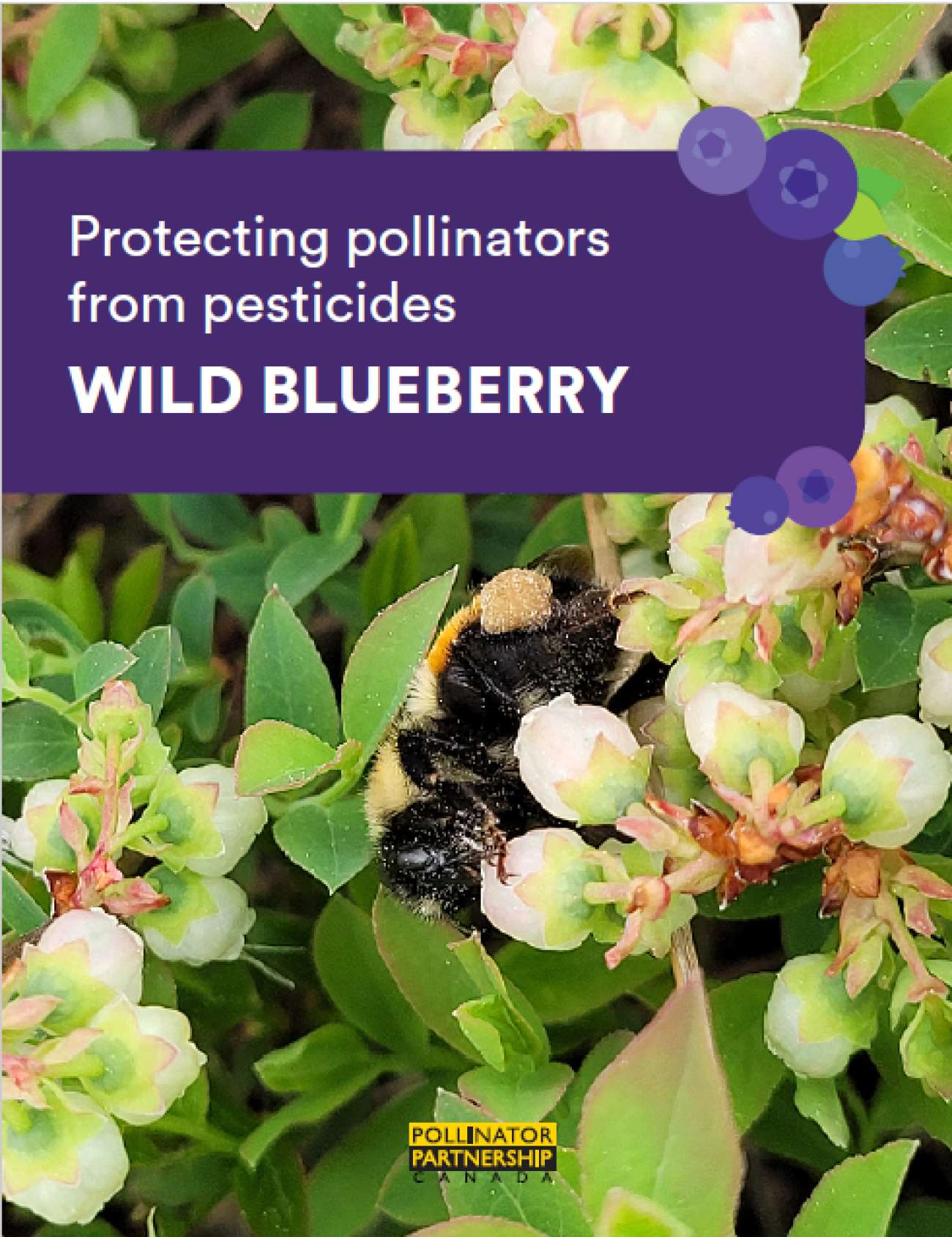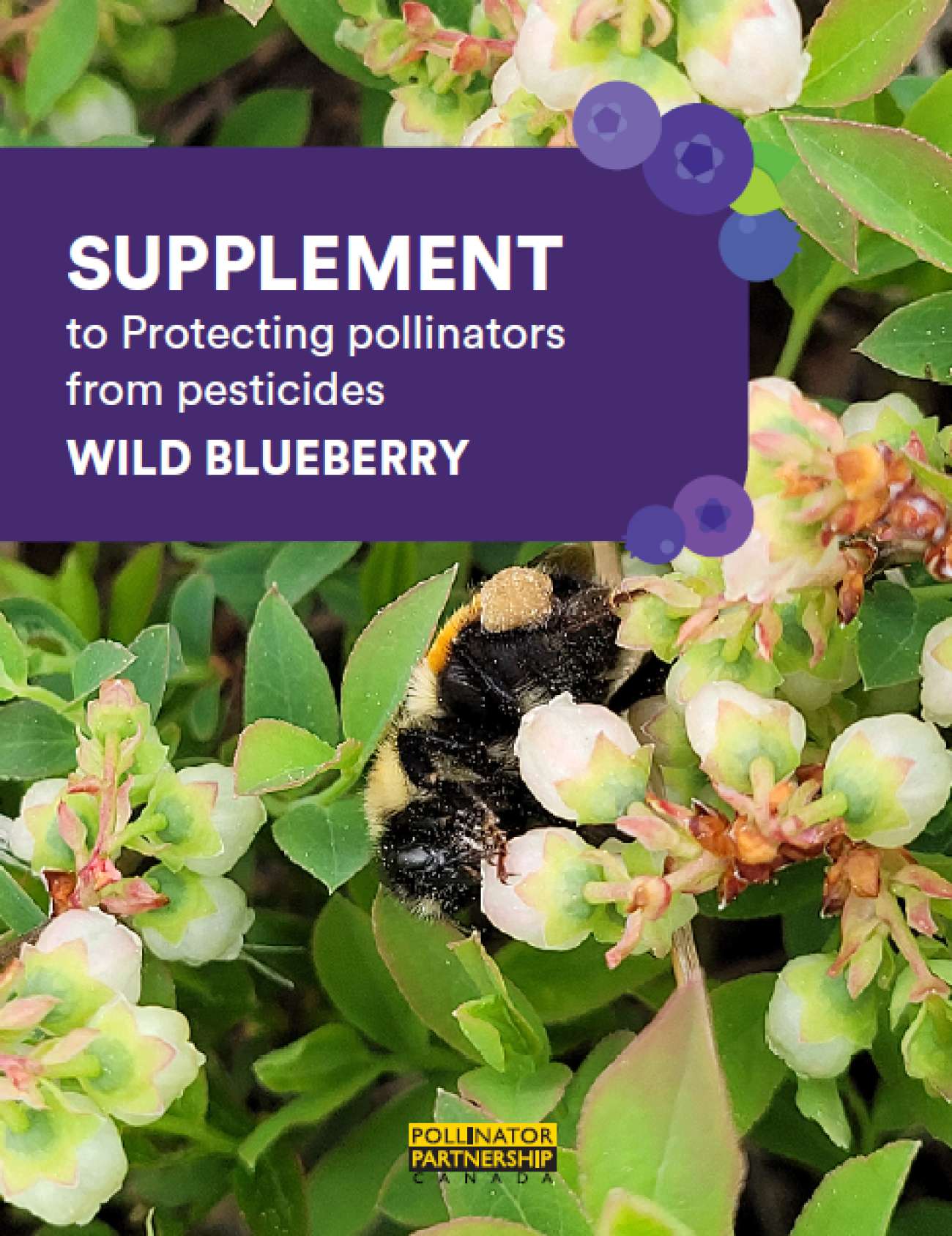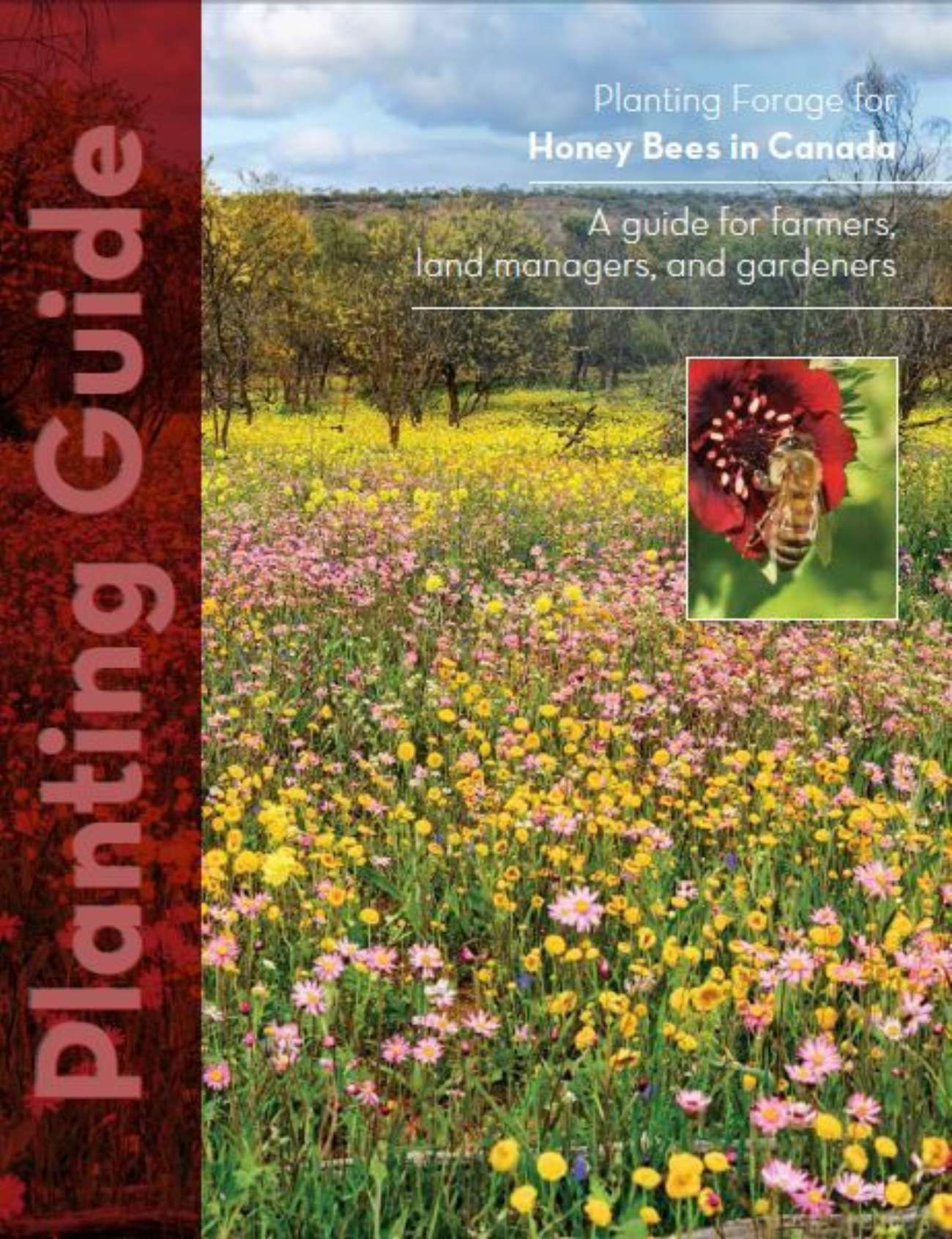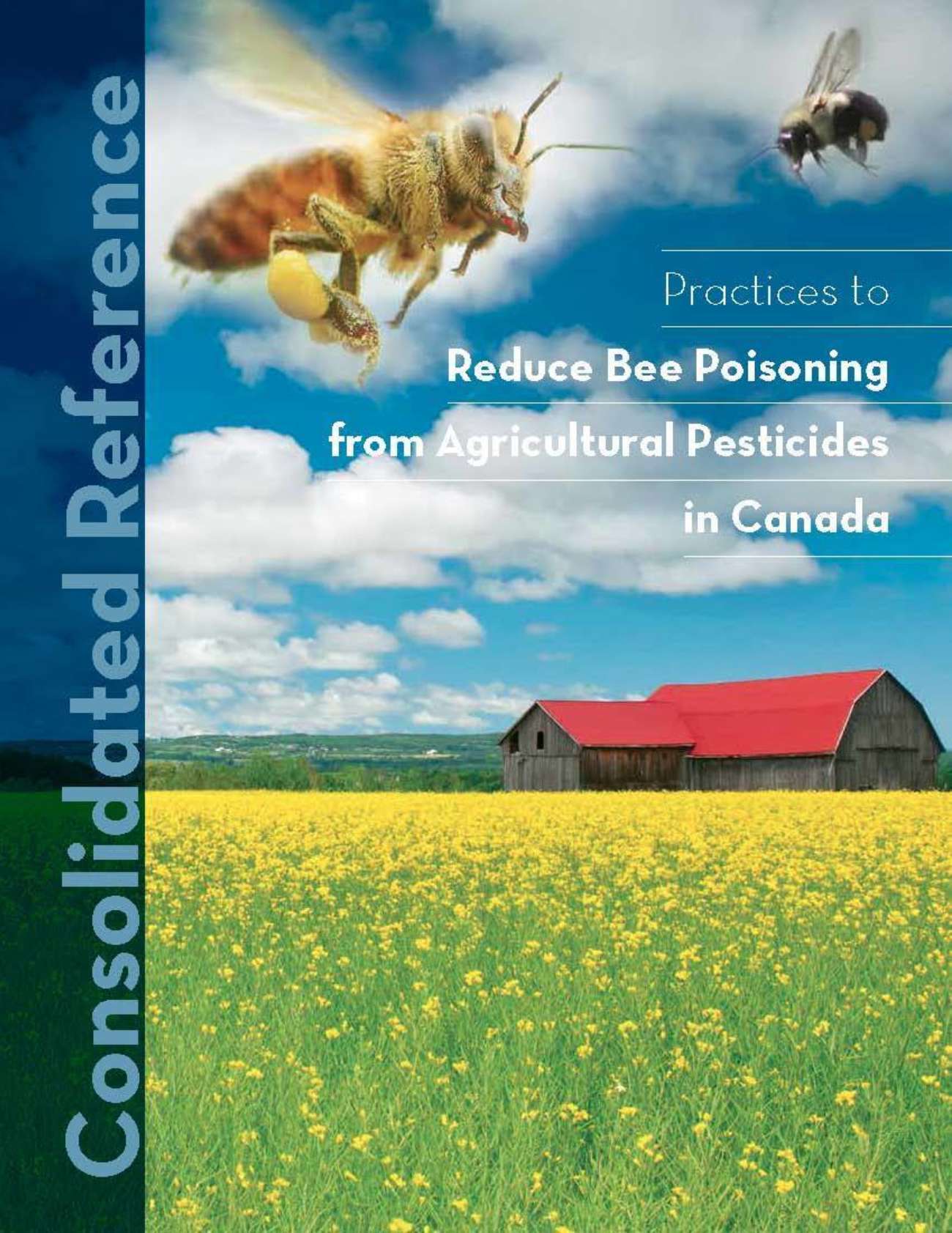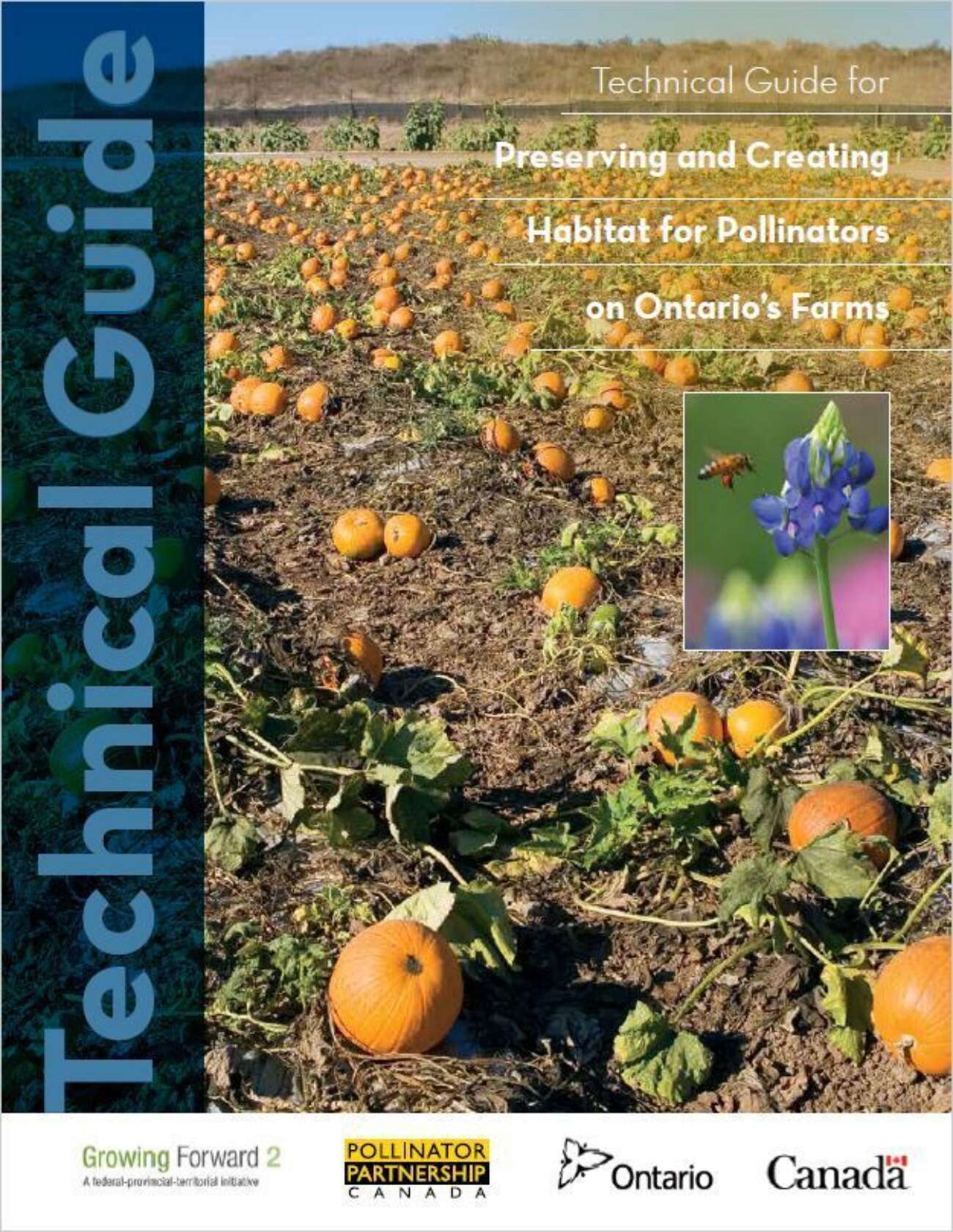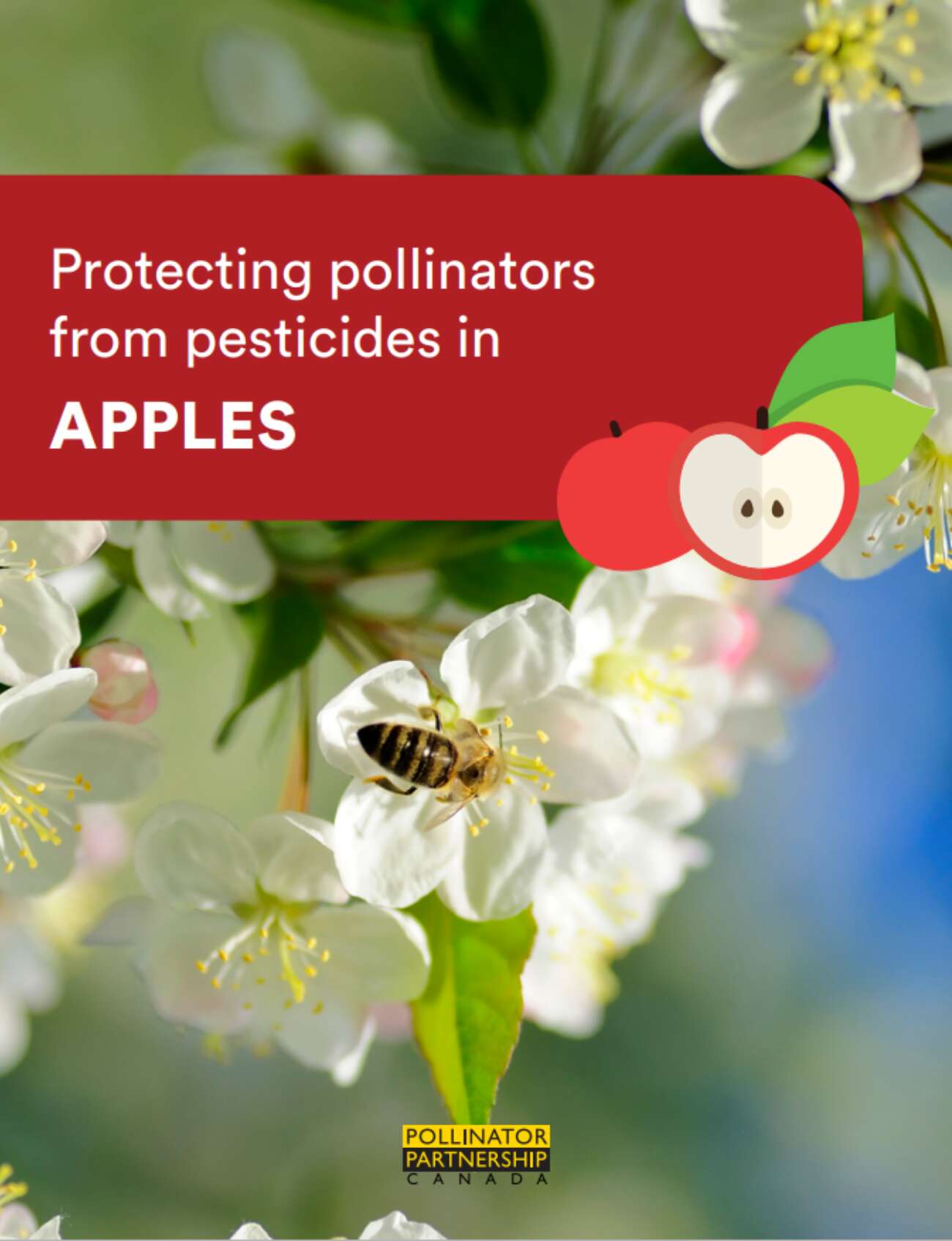
Protecting Pollinators from Pesticides - Apples
The focus of this guide is on promoting and protecting pollinator health in apple orchards, and is meant for all those involved in apple production. There are many factors that impact pollinator health in addition to pesticide exposure, including habitat loss, pests and diseases, and climate change. By reducing pollinators’ exposure to pesticides, stakeholders can help pollinator populations be more robust and healthier in the face of multiple stressors. This guide can be used as a quick reference on individual topics or can be read in its entirety for a deeper dive into the subject. It provides guidance on how to minimize the impacts of pesticides on pollinators (primarily bees) through informed decision-making, best management practices, and by maintaining good communication between all parties.
Supplement to Protecting Pollinators from Pesticides - Apples
This supplement to Protecting Pollinators From Pesticides Apples contains information on the pesticide regulatory process of the Pest Management Regulatory Agency (PMRA) and precautionary levels for pesticide products used in apples in Canada. It is meant to help stakeholders make more informed decisions when using pesticide products that may impact pollinators.
Protecting Pollinators from Pesticides - Canola
The focus of this guide is to minimize the impacts of pesticides and other management measures on pollinators, and it is meant for all those involved in canola production. There are many factors that impact pollinator health in addition to pesticide exposure, including habitat loss, parasites and diseases, and climate change. By reducing pollinators’ exposure to pesticides and taking other steps to support healthy populations, everyone can help pollinators to be more robust and healthier in the face of multiple stressors. This guide covers 4 main practices to support and minimize impacts of pesticides to wild and managed bees; integrated pest management, clear communications between beekeepers and growers, supporting pollinators through habitat, and careful use of pesticide products.
For a high resolution version of the guide, please email info@pollinatorpartnership.ca
Supplement to Protecting Pollinators from Pesticides - Canola
This supplement to Protecting Pollinators From Pesticides Canola contains information on the pesticide regulatory process of the Pest Management Regulatory Agency (PMRA)and precautionary levels for pesticide products used in canola in Canada. It is meant to help stakeholders make more informed decisions when using pesticide products that may impact pollinators.
Protecting Pollinators from Pesticides - Cucurbits
The focus of this guide is to minimize the impacts of pesticides on pollinators, and it is meant for all those involved in cucurbit production. There are many factors that impact pollinator health in addition to pesticide exposure, including habitat loss, insects and diseases, and climate change. By reducing pollinators’ exposure to pesticides, stakeholders can help pollinator populations to be more robust and healthier in the face of multiple stressors. This guide can be used as a quick reference on individual topics or can be read in its entirety for a deeper dive into the subject. It provides guidance on how to minimize the impacts of pesticides on the pollinators (primarily bees) found in cucurbit crops through informed decision-making, best management practices, and by maintaining good communication between growers, applicators, and beekeepers.
Supplement to Protecting Pollinators from Pesticides - Cucurbits
This supplement to Protecting Pollinators From Pesticides Cucurbit contains information on the pesticide regulatory process of the Pest Management Regulatory Agency (PMRA)and precautionary levels for pesticide products used in cucurbit in Canada. It is meant to help stakeholders make more informed decisions when using pesticide products that may impact pollinators.
Protecting Pollinators from Pesticides - Highbush Blueberry
The focus of this guide is on minimizing the impacts of pesticides on pollinators and is meant for all those involved in highbush blueberry production. There are many factors that impact bee health in addition to pesticide exposure, including habitat loss, pests and diseases, and climate change. By reducing bees’ exposure to pesticides, stakeholders can help bee populations be more robust and healthy in the face of multiple stressors. This guide covers 4 main practices to support and minimize impacts of pesticides to wild and managed bees; integrated pest management, clear communications between beekeepers and growers, supporting pollinators through habitat, and careful use of pesticide products. For a high resolution version of the guide, please email info@pollinatorpartnership.ca.
Supplement to Protecting Pollinators from Pesticides - Highbush Blueberry
This supplement to Protecting Pollinators From Pesticides Highbush Blueberry contains information on the pesticide regulatory process of the Pest Management Regulatory Agency (PMRA) and precautionary levels for pesticide products used in highbush blueberry in Canada. It is meant to help stakeholders make more informed decisions when using pesticide products that may impact pollinators. For a high resolution version of the guide, please email info@pollinatorpartnership.ca.
Protecting Pollinators from Pesticides - Wild Blueberry
The focus of this guide is on minimizing the impacts of pesticides on pollinators and is meant for all those involved in wild blueberry production. There are many factors that impact bee health in addition to pesticide exposure, including habitat loss, pests and diseases, and climate change. By reducing bees’ exposure to pesticides, stakeholders can support bee populations in the face of multiple stressors. This guide covers 4 main practices to support and minimize impacts of pesticides to wild and managed bees; integrated pest management, clear communications between beekeepers and growers, supporting pollinators through habitat, and careful use of pesticide products.
For a high resolution version of the guide, please email info@pollinatorpartnership.ca.
Supplement to Protecting Pollinators from Pesticides - Wild Blueberry
This supplement to Protecting Pollinators From Pesticides Wild Blueberry contains information on the pesticide regulatory process of the Pest Management Regulatory Agency (PMRA) and precautionary levels for pesticide products used in wild blueberry production in Canada. It is meant to help stakeholders make more informed decisions when using pesticide products that may impact pollinators.
Planting Forage for Honey Bees in Canada
This guide provides an overview of where and how honey bee forage can be created in Canada. It provides general information to farmers, road, utility and land managers, as well as home owners who are interested in enhancing honey bee forage and bee habitat. The primary focus of this guide is forage creation for honey bees as well as native bees and other pollinators. The guide covers three strategies for helping honey bees and other pollinators under the headings: Preserve, Restore, and Maintain. Later in the guide, there are sections with more detail and considerations for different land types: 1. Farms, 2. Roadsides, 3. Utility Corridors, and 4. Gardens. Under each land type, links to additional resources are also provided.
The guide provides a plant list of honey bee attractive pollen and nectar plants. The list focuses on native plants as well some introduced species that provide valuable nectar and/or pollen resources.
This guide entitled Planting Forage for Honey Bees in Canada: A guide for farmers, land managers, and gardeners, was produced by Pollinator Partnership Canada. The guide was commissioned for discussion purposes by Agriculture and Agri-Food Canada (AAFC) on behalf of the Bee Health Roundtable, an industry-government forum.
Practices to Reduce Bee Poisoning from Agricultural Pesticides
This guide provides information for farmers, beekeepers, and pesticide applicators on how to reduce bee poisonings from agricultural pesticides. Both managed bees and wild bees potentially can be harmed by pesticides used on crops. For many beekeepers, it has become increasingly challenging to keep honey bee colonies healthy. By using pesticides in a thoughtful manner, following label instructions, and considering managed and wild bees in crop protection plans, we can help reduce one source of harm to bees.
This guide provides information for farmers, beekeepers, and pesticide applicators on how to reduce bee poisonings from agricultural pesticides. The underlying cause of most bee poisoning incidents is a lack of information or awareness. Both beekeepers and growers benefit from developing working relationships and familiarizing themselves with each other’s management practices.
This guide entitled Practices to Reduce Bee Poisoning From Agricultural Pesticides in Canada, and produced by Pollinator Partnership Canada, was commissioned for discussion purposes by Agriculture and Agri-Food Canada (AAFC) on behalf of the Bee Health Roundtable, an industry-government forum.
Preserving and Creating Habitat for Pollinators on Ontario’s Farms
This guide has been created for farmers in Ontario who want to act to preserve, or create, pollinator habitat on their land. Actions that support pollinators improve the farm environment as well as the resilience of your farm business. Throughout this guide you will read stories of other farmers who have taken action across agricultural communities in Ontario to become pollinator champions. Whether your goal is to enhance crop pollination or increase the stewardship value of your land, this guide provides concrete examples to guide you.
